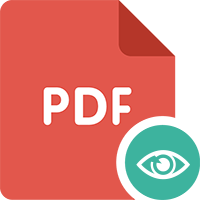Non-fungible Tokens in Decentralized Finance: Revolutionizing Asset Liquidity and Ownership
Published Online: November 20, 2025
Author Details
( * ) denotes Corresponding author
The study explores the impact of non-fungible tokens on asset liquidity within the decentralized finance system, based on a systematic review of thirty articles retrieved from major scholarly databases. We analyzed how NFTs contribute to increasing liquidity and facilitate a shift in digital asset ownership. Findings show NFTs improve asset liquidity by permitting fractional ownership and trade of assets that were previously illiquid, like real estate and digital art. NFTs’ unique characteristics and market volatility may make them less liquid. Blockchain technology that underpins NFTs offers transparent and unchangeable ownership records. The ramifications show how developers, investors, and regulators may take advantage of NFTs’ while resolving obstacles, including scalability problems and regulatory uncertainty.
Keywords
NFT; Blockchain; Decentralized finance; Liquidity
- Alawadhi, K. M. & Alshamali, N. (2022). NFTs emergence in financial markets and their correlation with DeFis and cryptocurrencies. Applied Economics and Finance, 9(1), 108. Retrieved from https://doi.org/10.11114/aef.v9i1.5444
- Ali, O., Momin, M., Shrestha, A., Das, R., Alhajj, F. & Dwivedi, Y. K. (2023). A review of the key challenges of non-fungible tokens. Journal of Blockchain Research, 9(1), 77-89.
- Chandra, Y. (2022). Non-fungible token-enabled entrepreneurship: A conceptual framework. Journal of Business Venturing Insights, 18, e00323. Retrieved from https://doi.org/10.10 16/j.jbvi.2022.e003 23
- Chiu, I. H.-Y. & Allen, J. G. (2022). Exploring the assetisation and financialisation of Non-Fungible Tokens (NFTs): Opportunities and regulatory implications. Retrieved from https://doi.org/10.2139/ssrn.4051912
- Chowdhury, M. A. F., Abdullah, M., Alam, M., Abedin, M. Z. & Shi, B. (2023). NFTs, DeFi, and other assets efficiency and volatility dynamics: An asymmetric multifractality analysis. International Review of Financial Analysis, 87, 102642. Retrieved from https://doi.org/10.1016/j.irfa.2023.102642
- De Vos, M., Olsthoorn, M. & Pouwelse, J. (2019). DevID: Blockchain-based portfolios for software developers. 2019 IEEE International Conference on Decentralized Applications and Infrastructures (DAPPCON), 158–163. Newark, CA, USA: IEEE. Retrieved from https://doi.org/10.1109/DAPPCON.2019.00030
- García-Monleon, F., Erdmann, A., Llorente, R. A. & Hernández, R. F. (2022). Adoption of NFTs as digital art: The moderating effect of crypto-experience and the role of sustainability. Techno Review. International Technology, Science and Society Review, 11(2), 1–11. Retrieved from https://doi.org/10.37467/revtechno.v11.4428
- Gonserkewitz, P., Karger, E. & Jagals, M. (2022). Non-fungible tokens: Use cases of NFTs and future research agenda. Risk Governance and Control: Financial Markets and Institutions, 12(3), 8–18. Retrieved from https://doi.org/10.22495/rgcv12i3p1
- Gramlich, V., Principato, M., Schellinger, B., Sedlmeir, J., Amend, J., Stramm, J. & Urbach, N. (2022, July 1). Decentralized Finance (DeFi): Foundations, applications, potentials, and challenges. NY: Rochester. Retrieved from https://doi.org/10.2139/ssrn.4535868
- Guggenberger, T. (2023). On the design and management of blockchain-based information systems (Doctoral thesis). Bayreuth. Retrieved from https://epub.uni-bayreuth.de/id/eprint/7254/
- Gunay, S. & Kaskaloglu, K. (2022). Does utilizing smart contracts induce a financial connectedness between Ethereum and non-fungible tokens? Research in International Business and Finance, 63, 101773. Retrieved from https://doi.org/10.1016/j.ribaf.2022.101773
- John, K., Kogan, L. & Saleh, F. (2023). Smart contracts and decentralized finance. Annual Review of Financial Economics, 15(1), 523–542.
- Kim, H., Kim, H.-S. & Park, Y.-S. (2022). Perpetual contract NFT as collateral for DeFi composability. IEEE Access, 10, 126802–126814. Retrieved from https://doi.org/10.1109/ ACCESS.2022.32 25884
- Maouchi, Y., Charfeddine, L. & El Montasser, G. (2022). Understanding digital bubbles amidst the COVID-19 pandemic: Evidence from DeFi and NFTs. Finance Research Letters, 47, 102584. Retrieved from https://doi.org/10.1016/j.frl.2021.102584
- Metelski, D. & Sobieraj, J. (2022). Decentralized Finance (DeFi) Projects: A study of key performance indicators in terms of DeFi protocols’ valuations. International Journal of Financial Studies, 10(4), 108. Retrieved from https://doi.org/10.3390/ijfs10040108
- Momtaz, P. P. (2022). Is Decentralized Finance (DeFi) efficient? SSRN Electronic Journal. Retrieved from https://doi.org/10.2139/ssrn.4095397
- Musan, D. I., William, J. & Gervais, A. (2020). NFT finance leveraging non-fungible tokens. Imperial College London.
- Nakamoto, S. (2008). Bitcoin: A peer-to-peer electronic cash system. Retrieved from https://dx.doi.org/10.2139/ssrn.3440802
- Popescu, A. D. (2021, May). Non-fungible tokens (NFT)–innovation beyond the craze. In 5th International Conference on Innovation in Business, Economics and Marketing Research (Vol. 32, pp. 26-30).
- Razi, Q., Devrani, A., Abhyankar, H., Chalapathi, G., Hassija, V. & Guizani, M. (2023). Non-Fungible Tokens (NFTs) - Survey of current applications, evolution and future directions. IEEE Open Journal of the Communications Society, 1–1. Retrieved from https://doi.org/10.1109/OJCOMS.2023.3343926
- Regner, F., Schweizer, A. & Urbach, N. (2019, December 15). NFTs in practice – non-fungible tokens as core component of a blockchain-based event ticketing application. Retrieved from https://www.researchgate.net/publication/336057493_NFTs_in_Practice_-_Non-Fungible_Tokens_as_Core_Component_of_a_Blockchain-based_Event_Ticketing_ Application
- Schär, F. (2021). Decentralized finance: On blockchain- and smart contract-based financial markets. Review, 103(2). Retrieved from https://doi.org/10.20955/r.103.153-74
- Schwiderowski, J., Pedersen, A. B., Jensen, J. K. & Beck, R. (2023). Value creation and capture in decentralized finance markets: Non-fungible tokens as a class of digital assets. Electronic Markets, 33(1), 45. Retrieved from https://doi.org/10.1007/s12525-023-00658-z
- Swan, M. (2018). Chapter five - blockchain for business: Next-generation enterprise artificial intelligence systems. In P. Raj & G. C. Deka (Eds.), Advances in Computers (pp. 121–162). Elsevier. Retrieved from https://doi.org/10.1016/bs.adcom.2018.03.013
- Tapscott, D. & Tapscott, A. (2016). Blockchain revolution: How the technology behind bitcoin and other cryptocurrencies is changing the world. Penguin. Retrieved from https://www.amazon.in/Blockchain-Revolution-Technology-Cryptocurrencies-Changing-ebook/dp/B01EGYYNF8/ref=tmm_kin_swatch_0
- Tuszko, F. & Lewicki, M. (2022). Taming liquidity: The relation between materiality and the value of artworks on the example of polish NFT auctions. Retrieved from https://doi.org/ 10.36854/widok/2022.34.2630
- Wang, Z., Gao, J. & Wei, X. (2022). Do NFTs’ owners really possess their assets? A first look at the NFT-to-asset connection fragility. Retrieved from https://doi.org/10.48550/arXiv.2212.11181
- Wilkoff, S. & Yildiz, S. (2023). The behavior and determinants of illiquidity in the non-fungible tokens (NFTs) market. Global Finance Journal, 55, 100782. Retrieved from https://doi.org/10.1016/j.gfj.2022.100782
- Yli-Huumo, J., Ko, D., Choi, S., Park, S. & Smolander, K. (2016). Where is current research on blockchain technology? A systematic review. PLOS ONE, 11(10), e0163477. Retrieved from https://doi.org/10.1371/journal.pone.0163477
- Yousaf, I. & Yarovaya, L. (2022). Herding behavior in conventional cryptocurrency market, non-fungible tokens, and DeFi assets. Finance Research Letters, 50, 103299. Retrieved from https://doi.org/10.1016/j.frl.2022.103299
 Abstract Views: 6
Abstract Views: 6
 PDF Views: 9
PDF Views: 9

